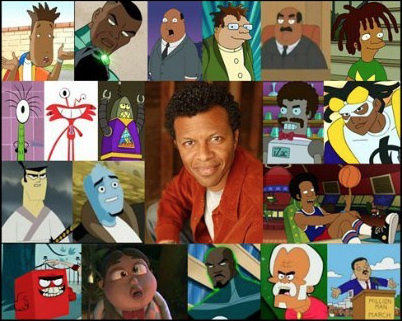Emily S. Whitten: NYCC 2015 Part II – The Round-Up!
 As much fun as Turtles Day (as I now affectionately call the Thursday of New York Comic Con) was, it’s most definitely not the only awesome thing about NYCC. There’s always so much awesome stuffed into those four days that it’s hard to sum it up.
As much fun as Turtles Day (as I now affectionately call the Thursday of New York Comic Con) was, it’s most definitely not the only awesome thing about NYCC. There’s always so much awesome stuffed into those four days that it’s hard to sum it up.
This year, to assist me in my round-up, I thought I’d finally try out a New Method of Doing Things, given that my awesome friend Cleolinda Jones finds it so useful, and that she’s been using it to successfully round-up all of the online things we mention during our Made of Fail podcast (which is still going, by the way! Our latest episode was Dragon Con: The Wrath of Con. Lisssstennn!)
So even though I’m still going to hit the highlights below, I’m also going to direct you afterwards to my brand new, shiny first effort at using Storify (woo!) for even more details and pictures and who-all knows what. We’ll see how we like this whole Storify thing, eh? Call it a social experiment. And now, without further ado:
My Favorite Things About NYCC This Year:
Well we already mentioned Nickelodeon’s TMNT. Check out last week’s column for all the details on that!
Artist Alley
This is and always will be one of my favorite parts of NYCC. This year I got to walk the entire room with enough time to stop and look at the art and other items on display, and to chat with some creator and fan friends and meet some new friends. I walked around with one of my TMNT friends who was happy to meet some cool artists (hey, Kathy!), strolled some aisles with my DC-local friend who bought some most excellent My Little Pony art (holla, Petra!), and bounced around to see some creators with Eric Bauza (including taking him, as the Voice of Amadeus Cho, over to meet Reilly Brown, one of the Artists for Amadeus Cho. That was fun.)
Of course, inevitably after the con ended I realized I’d somehow still missed a few people I wanted to see (alas!) but that always happens. I watched some artists working (love doing that! Tony Moy was particularly fun to watch this year), resisted mightily buying everything in sight, and picked out just a few things to take home with me. Chief among them were Jason Hurley and Jeremy Haun’s Beauty, the first two issues of which are intriguing, and have convinced me to keep reading. I also picked up four issues of Runaways written by Noelle Stevenson, with art by Sanford Greene, which I’m looking forward to (I loved Brian K. Vaughan’s original run but got away from it for awhile after he left the book. I’ve been meaning to dive back in!). I got a cool metallic-finish Deadpool poster from Reilly Brown, as well as his new sketchbook.
And since I’m in the process of working on some comics projects myself, I was particularly excited to score a signed copy of Make Comics Like the Pros from Greg Pak and Fred Van Lente; and an X-Files comic with accompanying limited-edition script from Joe Harris. And last but not least, I picked up the most adorable dancing Groot sketchcard from Janet K. Lee, which I’d commissioned at a previous con. Yay!
Walking the Con floor
Okay, so I admit that this year even I was slightly overwhelmed by the crowd, and had to go hide in the still very crowded but less frantic-feeling Artist Alley from time to time. However, I did get to do some really fun things on the con floor. I saw my wonderful friend Ellen Datlow at the HWA booth, where I picked up a free copy of her The Best Horror of the Year: Volume 7 anthology, and bought a copy of her Nightmare Carnival anthology (creepy carnival stories! I will read them with shivery delight and then never sleep again). I hopped over to the IDW booth, had a nice chat with Dirk Wood, and picked up a copy of God is Disappointed in You, which I am super-curious to read.
I swung by the Marvel booth, and, although I sadly missed the spectacular Daredevil poster, got a great Jessica Jones poster and comic and a handful of other cool swag, including the cutest Skottie Young Secret Wars print you ever did see. I mostly avoided buying collectibles because my apartment overfloweth with them already, but did get a tiny adorable stuffed ram (what, it’s tiny!) and an awesome inflatable Companion Cube ottoman (for my casual dinner parties! Totally practical! I always run out of seating). I got to visit with the ever-charming Mark Gagliardi and meet Hal Lublin, both of The Thrilling Adventure Hour, and stroll around with great friends like fun fellow DC-ite LacyMB, awesome voice actor Eric Bauza, and fellow reporter Ashley B. And Ashley and I got to take creepy crime scene videos of ourselves after being “killed” in the line of reporting duty (probably trampled by crowds trying to get into the Funko booth, yes?) at the Spotless exhibit. All-around good adventures.
Ash vs. Evil Dead
This was a fantastic panel. I love Bruce Campbell (particularly after Burn Notice – he was so good as Sam!) so I really wanted to see him on a panel; plus, I’ve been curious about how they’d make this show work ever since I started seeing the media for it at SDCC. This panel was particularly cool because I went with someone else who was totally excited about it (probably the most excited of anyone there, really) and good panel-going company always makes it more fun. We got nifty swag (Ash4President buttons, and foam chainsaws), Bruce et al. (and host Kevin Smith) were very entertaining panelists, and they showed the entire premiere episode (during which I am not ashamed to admit I jumped a lot. My startle reflex will never disappear. Neither will my desire to hide behind people or couches during scary scenes).
Unfortunately there were no couches at the Hammerstein Ballroom, but I survived. The premiere is exactly what you would want if you’re an Evil Dead fan, I think; and even if you’re not really up on the franchise, it’s engaging enough to draw in a new crowd – that is, if they are people who can handle a lot of gore and gratuitous violence. I was pretty interested in the characters they’re starting to build for the younger leads (Kelly and Pablo, played by Dana DeLorenzo and Ray Santiago) and the storyline they’re starting with the cop (Jill Marie Jones) and Lucy Lawless’s character Ruby. And of course, tying it all together is the always classy (sarcasm, what? I will say I thought the sex scene early on was a little much even for this character) Ash, and a boatload of well-done references to the franchise. My one caveat is that I think in order to keep people interested, they’re going to really have to do some character and story-building with the non-Ash characters – but if they do it well, this show could be a really cool addition to TV horror.
Seeing awesome people!
And so many of them; but primarily here I’m talking about Andrea Romano, who I was delighted to learn was autographing this year (if she has in the past, I’ve missed it). She is definitely one of the uber-talented people of the animation industry that I most admire (plus she’s super classy and nice), so it was great to see her again and get her to sign what is turning into one of the most-autographed things I own, a TMNT pizza box. Phil LaMarr also added his signature to the collection (I love him as Baxter Stockman), and it was great to see him as well. And as it turned out, the delightful and hilarious John DiMaggio was also signing at the same time, so I got a great Joker picture signed by him. Yay!
The ICv2 White Paper Happy Hour
Although I love all the media stuff that goes on at comic cons, I really like to spend time on the comics end of things too. I’d never been able to get to the ICv2 stuff before, since they usually do events on Wednesday before I arrive in town for the con. This year, though, they changed tack and did something during the con. For those who don’t know, ICv2 studies and reports on the statistics and trends about in the industry, including e.g. comics and convention trends. It was interesting to hear the latest on the State of the Industry at the event, and particularly the continued growth in female readership in comics, which was regarded with enthusiasm (good!).
Of course, it was also nice to grab a drink and a chat with comics friends, and engage in some more serious discussions regarding news such as the most recent sexual harassment in the business (which I will be addressing more in another column). I’m glad these things are being discussed rather than ignored.]
And finally…
Just all of the fun and energy of going out and about with all of the awesome people who are in NYC during Comic-Con. That includes the Image party, at which everyone in comics showed up (seriously, I mean I didn’t personally run into everyone, but I’m pretty sure they were all there) in a maze-like bowling alley/arcade/bar/dance club with many levels and rooms and cool chairs I wanted to steal. Also the several lovely breakfasts and dinners I had with high school friends and law school friends and con friends (and apparently this year’s accidental restaurant theme was seafood, since I ended up at Grand Central’s Oyster Bar, Crave Fishbar, and L&W Oyster Co. all in the space of three days. Not that I minded! Such gooood foooood). And the fun bar scene, which this year included the Campbell Apartment which I had no idea existed and which is exactly the sort of place I love to discover (thanks, Dennis!). And of course the wrap-up of my NYC trip, which ended with a great long-form improv show featuring Phil LaMarr at the Upright Citizens Brigade Theatre, which I’d never been to. It was fantastic; and I haven’t laughed that hard in some time!
And that was pretty much my show this year! But if that isn’t enough excitement for you, or if you’re hurting for my usual linkage to tons of pictures, for even more round-up, click here or just scroll down to check out my NYCC Storify (and let me know if you like it, as a thing. Should I do it again? Feedback, people! Do tell!).
And until next time, Servo Lectio!














